Carpet Fitting Cost
Last updated 3rd April, 2024
Want to find out how much carpet fitting costs?
The average cost of carpet installation ranges from £70 to £1000, depending on the size of the area and whether underlay is required.
This article offers an in-depth breakdown of carpet fitting prices in any room of the home per square metre, any additional costs, the process of installing a new carpet, hiring a carpet fitter and DIY carpet installation tips.
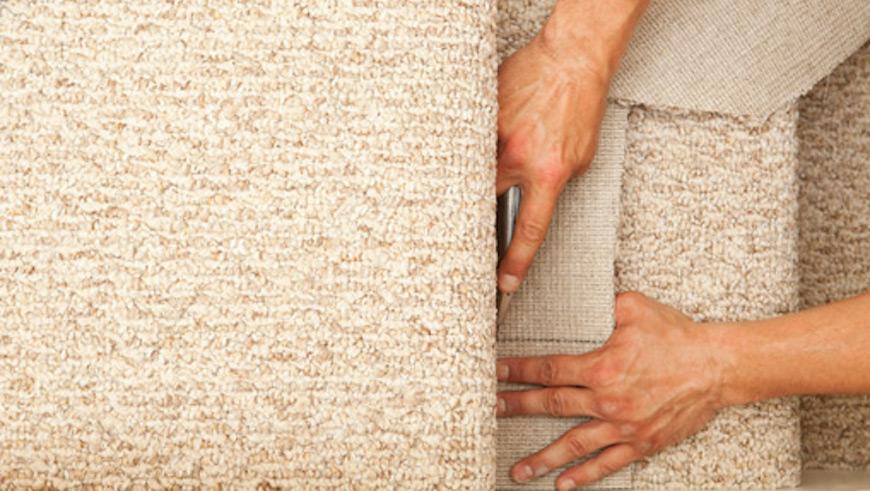
How Much to Fit a Carpet?
The cost of fitting a new carpet is typically calculated per square metre.
On average, carpet installation costs anywhere from £3 up to £40 per square metre.
What affects the cost of fitting a carpet?
The quality of the carpet will affect the overall price. For example, a basic carpet, such as synthetic and olefin only costs around £5 per square metre.
A medium quality carpet (nylon, polypropylene, polyester) would cost around £20 per square metre, while a luxury carpet such as velvet, Axminster woven, Wilton woven carpet can cost £40 per square metre.
The cost may also increase if carpet underlay is required, as this costs an extra £3 - £15 per square metre.
Table of Contents
- How much to fit a carpet?
- Labour costs and time frames
- Additional costs
- What does carpet fitting entail?
- DIY carpet fitting
- Choosing a carpet
- Do I need underlay?
- Carpet cleaning and maintenance
- Carpet stretching and repairs
- Alternatives to carpet
- Carpet in the bathroom
- Carpet removal cost
- FAQS
- How to find and hire a carpet fitter
- Sources
Carpet Prices
The below table shows the cost of carpet fitting depending on the size, installation area and material quality.
| Type of carpet fitting | Size | Budget | Mid-Range | Luxury |
|---|---|---|---|---|
| Underlay only | Single bedroom (7m2) | £70 | £70 | £70 |
| Carpet only | Single bedroom (7m2) | £35 | £140 | £280 |
| Underlay and carpet | Single bedroom (7m2) | £105 | £210 | £350 |
| Underlay only | Master bedroom (15m2) | £150 | £150 | £150 |
| Carpet only | Master bedroom (15m2) | £75 | £300 | £600 |
| Underlay and carpet | Master bedroom(15m2) | £225 | £450 | £750 |
| Underlay only | Living room (20m2) | £200 | £200 | £200 |
| Carpet only | Living room (20m2) | £100 | £400 | £800 |
| Underlay and carpet | Living room (20m2) | £300 | £600 | £1000 |
| Minimum charge | Staircase (13 steps) | £50 | £50 | £50 |
| Carpet only | Staircase (13 steps) | £65 | £260 | £520 |
| Carpet and minimum charge | Staircase (13 steps) | £115 | £310 | £570 |
Supply Only Costs
Want to fit a carpet yourself?
DIY carpet fitting will allow you to reduce the cost of labour, although you will also need to account for the following carpet supply costs.
| Carpet Style | Cost per square metre |
|---|---|
| Woven | £60 |
| Berber | £6 |
| Saxony | £8 |
| Twist | £6 |
| Velvet | £40 |
| Loop | £4.50 |
| Cut and Loop | £10 |
Cost Breakdown Calculator
Individual Costs For Supplying And Fitting Carpet In a 20 Square Metre Lounge - Total Cost: £600
Materials
£400
Tradesmen
£200
Waste Removal
£0
Labour Costs and Time Frames
Here, we will look at the average labour costs and timeframes involved in fitting a new carpet.
The estimated cost of hiring a carpet fitter is between £90 to £120. This involves a timeframe of 2 – 3 hours for an average-sized room of 20m2.
The table sets out the carpet installation labour costs and timescales:
| Size of room | Time to complete labour | Labour costs |
|---|---|---|
| 7m2 | 1 hour | £60 |
| 15m2 | 2 hours | £90 |
| 20m2 | 3 hours | £120 |
The following table includes the timeframes for each part of the carpet fitting process:
| Task | Time to completion |
|---|---|
| Carpet delivery | 3 – 10 days |
| Moving furniture | 1 – 3 hours |
| Removal of carpet | 30 minutes – 1 hour |
| Fitting new underlay, grippers and door bars | 1 hour – 1.5 hours |
| Laying new carpet | 1 – 3 hours |
Additional Costs
When calculating the cost of carpet fitting, you may want to consider some additional costs, such as:
Grippers
Grippers are specially created pieces of plywood designed to keep your carpet in place. They have been treated with a high-grade resin and have sharp pieces of nails that stick up, ready for a carpet to be installed.
A gripper is normally 1 metre to 1.5 metres long and around 20 mm wide.
They need to be placed across all the edges of the room the carpet is to be fitted in.
The average cost of a set of 7 gripper rods for a single bedroom is around £5.
For a master bedroom, you will need 15 drippers which cost around £10, while a living room will require 20 grippers at the price of £15.
Skirting Boards
You may decide to get new skirting boards whilst you’re having a re-carpet. If you do, expect to pay an average of £5 per metre.
Moving Furniture
Some carpet fitting companies will be more than happy to help you move any furniture out of the room.
For bigger companies, this may be done free of charge. Small companies, with only one or two labourers, may add on a small charge (£50 - £75). It’s best to check with the company beforehand.
It will also depend on the type of furniture. For example, if you’re having a small room redone with very simple furniture, it will be a lot easier than a bedroom with a double bed and wardrobe!.
Waste disposal
Once you have your lovely new carpet fitted, have you considered where you’re going to put the old one?!
Some carpet fitting companies and carpet retail stores will take your old carpet and underlay away, at the cost of between £1 - £4 per square metre.
Some fitters will charge a bulk cost to take the whole carpet away – between £15 to £20 for the whole thing.
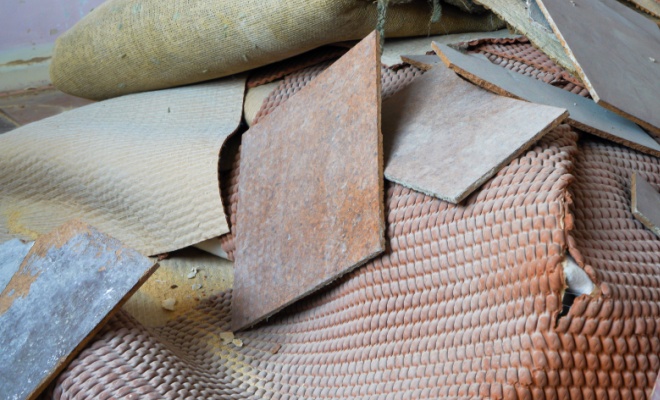
On a budget?
A cheaper option is to get rid of the carpet and other waste yourself.
Most recycling centres don’t accept carpets (but do check) so it’s probably best to take it to the local tip/dump. Although this is usually free, make sure you check your local council’s website.
You will also need to think about how you are transporting the carpet and waste there. Do you have a big enough vehicle, or do you know someone who can help? Will you have to cut the carpet into smaller pieces?
Depending on the quality of the carpet, it might be worth checking if any local charities, organisations or anyone in the community could make use of it.
Delivery
The standard carpet delivery charge is around £30, but this could increase up to £60 if you live quite far away from the retailer, or if you live in London.
Door Bars
Door bars are the trim that goes over the door threshold and joins up one room’s carpet/flooring to the next rooms.
A door bar usually comes in a length of around one metre, and that will cost between £3 to £5, depending on design and material.
Floor Levelling
Sometimes when a carpet or laminate flooring is being fitted, it’s discovered (usually beforehand!) that the floor is not level.
Unfortunately, this is an issue that will usually need to be fixed before any other work is carried out.
The average cost of floor levelling is between £8 to £10 per square metre.
Underfloor Heating
If you’re thinking about getting a new carpet, you might want to consider getting underfloor heating installed too. Some of the advantages of having underfloor heating are:
- Warmth on feet.
- Even distribution of heat around rooms.
- Freeing up space where radiators once were.
- Possibility of increasing home’s value.
There are two main types of underfloor heating: electric and water. The average price for getting electric underfloor heating is £60 per square metre, and for a water system, you can double that cost to £100 per square metre.
What Does Carpet Fitting Entail?
To help you understand the process of installing a carpet, take a look at our step by step guide:
Move Furniture
Before your new carpet can be installed, all furniture will need to be removed from the room. If you are unable to do this yourself, check with the carpet fitting company you have hired to see if they can assist and, if so, ask how much they will charge.
Check Skirting Boards
Do you want to replace your skirting boards? or maybe you’d prefer to paint them. It’s best to do this now before the new carpet is installed – you don’t want paint dripping on your brand-new carpet!
Remove the Carpet
If you’re doing this yourself remember to plan how you’re getting rid of it first! You may opt to remove it yourself to save on labour, or ask the installer to do it for you, which may result in an additional charge.
Remove the Old Underlay
Once you have the old carpet up, check the condition of the underlay. Some people might consider keeping the old underlay, but it’s usually not worth it. Underlay can get destroyed, and once you have the new carpet down, you won’t want to rip it back up again just for new underlay!
You should consider removing your underlay if it is crumbling or has collected a significant amount of dust.
Cut The New Carpet To Size
The next step will involve rolling out the new carpet in the empty room and cutting it an extra 200mm all round, ensuring that any pattern in the carpet is square to the walls and that you leave enough overlap to go through any doorways. The carpet will then be rolled up again and placed to one side.
Carpet Grippers Installed
Next, lay carpet grippers around the outside of the room about 12mm away from the skirting boards and hammer into the floor using masonry nails, ensuring the sharp ends point towards the walls to grip the carpet.
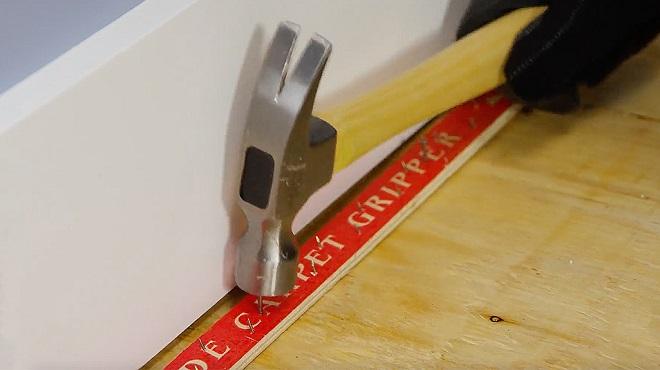
Underlay Is Put Down
Then, lay the underlay inside the gripper and roll out the carpet by pushing it into one corner first, so the overlap folds down onto the carpet, leaving a crease where it meets the skirting board. Push this crease well into the joint where the carpet meets the floor. Then use a sharp knife to remove the overlap while pushing the carpet onto the gripper in that corner.
Work along one edge of the carpet until one wall is complete, then go back to the starting corner and work along the other wall.
Carpet Is Fitted
Finally, use the kicker to stretch diagonally across the room. When all the carpet is cut to size and placed into position, use the kicker to make sure the carpet is tight to all skirting boards. Then, use a carpet bolster to bang down the carpet between the gripper rods and the skirting boards for a lovely neat finish.
DIY Carpet Fitting
Prefer to install the carpet yourself?
You may want to lay a new carpet yourself in order to save on labour costs, however there are some disadvantages to consider, including:
- It may not look as good! If you’re not an expert, then the finishing job may not look as good as an expert’s work would.
- You could ruin the materials. Between the underlay, the carpet and all the other bits and pieces, the cost of all the materials add up. By attempting to install the carpet yourself, you could end up accidentally ripping, ruining or completely destroying some of the materials! This could end up being a very costly mistake .
- It’s physically difficult. Fitting carpet can be physically demanding – especially on the knees and back. If you have any existing pain or medical conditions, you may want to avoid such intensive labour – or at least check with your doctor or medical professional.
- It’s stressful. This is not an easy or simple task. There’s lots of tedious bits to do and a lot of pressure to get it right.
Choosing a Carpet
Before purchasing a carpet, you need to consider what you need from a carpet, such as:
- Potential lifespan - How long do you want/need your carpet to last? If lifespan is a priority, you should choose a hardwearing carpet such as berber or twist if you need a carpet that will last for years to come.
- Function - What function do you need a carpet for? Is it for luxury and comfort? Or do you need it to be hardwearing and last?
- Placement – Every room in your house is treated differently: the hallway is trekked through, the living room is used daily, a bedroom is a place for comfort. How you use each room corresponds to what type of carpet you should choose.
- Foot traffic - Is the room heavily used by a lot of people? A hallway, for example, usually has heavy foot traffic because it’s walked on many times a day by the entire household.
- Pets - If you have pets, you may need to think about how they could potentially damage a ‘softer’ carpet type.
- Tog value - Think about a carpet's tog value which is a thermal insulating factor. Do you want to insulate your home better? Then pick a higher tog rating!
- Ply - Most carpets are single ply, but if you need a more robust carpet, consider getting a multiple-ply carpet.
- Design - To ensure you match your decor, you should bring a piece of wallpaper/paint colour sample to the shop with you. It’s much harder to remember shade and tone than you think! You can also ask for samples to bring home to try out. Put the samples in different areas of the room and check at different times of the day.
How can I lower the cost of a carpet installation?
If the overall price of getting a carpet fitting is starting to exceed your budget there are some things you can do to cut the costs:
- Consider a cheaper carpet - Are there any types of carpet available that do the same thing? Is there anywhere selling it for less? Can the retailer do you a deal? Is there any discontinued stock on sale?
- Buy additional extras yourself - Check with the carpet fitters if you can get money off for providing things like the grippers yourself.
- DIY removal - Can you get money off if you remove the carpet and underlay yourself?
Buy in winter
You might find there are some great deals to be found during the winter months. There are often sales on – plus, you may have a better choice of carpet fitters as wintertime is usually slower for labourers.
What carpet should you get?
Here are some of the most common carpet styles available:
Woven Carpet Cost
Woven carpets take a longer time to make, and the process is more labour intensive. A roll of tufted carpet can take roughly an hour to make, whereas the same amount of woven carpet would take eight hours!
This is one of the most expensive styles to choose from.
You could pay around £60 per square metre for this style of carpet. There are three main types of woven carpet:
- Axminster
- Wilton
- Flat weave
Tufted Carpet Cost
Tufted carpets are machine-made, lowering the cost significantly compared to a woven carpet. Most UK homes have tufted carpet, and it is much more likely that you will be purchasing a tufted carpet, especially when shopping at carpet shops and DIY stores. There’s lots more choice of tufted carpet, including:
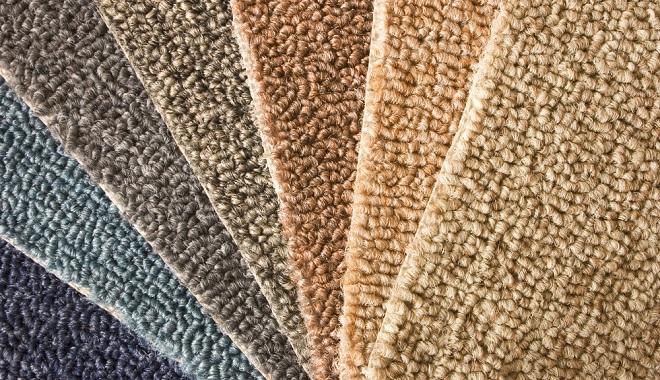
Berber Carpet Cost
This type of carpet is made from a looped pile (the pile is either level looped or multilevel looped) and has a very distinctive thick, knotted loop. Berber loop is ideal for areas of the house with heavy foot traffic, such as the living room, hallways or playrooms as it’s tough and also hides dirt well.
You can expect to pay around £6 per square metre for berber carpet.
Keep in mind...
Berber carpet is prone to pulls or snags as a result of regular use.
Saxony Carpet Cost
A Saxony carpet is best for an area with lower foot traffic, such as a room that’s only used occasionally. That’s due to the tips of the pile being twisted rather than blended together. Footprints, vacuum cleaner dents and anything weighted will leave a dip in the carpet.
Another benefit of saxony is that it is comfortable underfoot, so it is ideal for bedrooms.
The cost of saxony carpet is approximately £8 per square metre.
Twist Carpet Cost
One of the most popular types of carpet are twist carpets which are great for hiding dirt, coping with heavy use and are a great choice for pet owners.
Twist carpets are ideal for living rooms, however, be careful of any spillages, as they can be quite hard to clean.
You can expect to pay around £6 per square metre for twist carpet.
Velvet Carpet Cost
A velvet carpet is probably the most luxurious choice, after woven. It is also the second-most expensive carpet as it costs around £40 per square metre.
The pile is dense and short, which makes it very comfortable underfoot, so it is a great choice for bedrooms.
Loop Carpet Cost
This refers to carpets that are created by looping the pile, which creates great, hardworking carpets that are a practical choice.
However...
Animal owners should avoid loop carpet, as cats and other clawed animals can get their claws stuck in the loops!
Loop carpet is one of the cheapest options and tends to cost about £4.50 per square metre.
Cut and Loop Carpet Cost
Cut and loop, also known as multilevel looped, is a type of layered carpet which was very popular in the 60s and 70s, although isn’t common in households today, so it may be hard to find.
This type of carpet offers tradtional patterns which work well in living rooms.
Cut and loop carpet normally costs around £10 per square metre.
Do I Need Underlay?
Whether or not you need underlay depends on the type of carpet you choose.
For example, If your new carpet has foam or felt backing, then you won’t need underlay. However, most carpets will have a backing made up of latex or textile, and for this type, you will need underlay.
What are the benefits of underlay?
A lot of carpet fitters will also insist on underlay. This is because it has so many advantages, such as:
- Save energy through insulation
- Help soundproof your room
- Protect the new carpet
- Create a sturdier base
There are different types of underlay, including:
Crumb Rubber Underlay Cost
Crumb rubber is the best choice of underlay if durability and longevity are the two main concerns. It often comes with a guarantee that it will last as long as the carpet.
It’s ideal for areas with heavy footfall – although it’s not the best choice in terms of comfort offered.
Crumb rubber underlay costs around £4 to £6 per square metre.
Felt/Crumb Rubber Combination Underlay Cost
The combination of felt and rubber allows this underlay to be both durable without comprising on comfort. The mix of materials helps with both sound and heat installation.
It’s ideal for use with Axminster and Wilton carpets.
You can expect to pay £6 to £7 per square metre for a felt and rubber combination underlay.
Sponge Rubber Underlay Cost
In the past this underlay was made from natural rubber, nowadays it’s made with synthetic rubber, but that hasn’t changed the benefits. For example, sponge rubber is great for comfort, has excellent spring retention and is available in a variety of thicknesses.
Sponge rubber underlay costs £2 to £8 per square metre.
Polyurethane Foam Underlay Cost
This type of underlay is usually made from recycled foam and/or foam cut-offs. It comes in different thicknesses which means it can be used with almost all the carpets on the market.
It’s comfortable underfoot, which helps make this the most popular type of underlay. Another benefit is that polyurethane foam can be recycled again after use.
This is the cheapest type of underlay and costs as little as £1 per square metre.
Carpet Cleaning and Maintenance
Once you have your new carpet installed, you want to make sure it lasts as long as possible. In order to do this, you need to learn how to best take care of your particular type of carpet.
Effective carpet cleaning could prolong the life of your carpet by years which is why it's imperative to keep up to date with regular carpet maintenance.
Woven Carpets
Due to the way in which woven carpets are made, this type of carpet needs to be treated with extra care. Remember to always check with the manufacturer as every carpet may have slightly different needs.
Here are some general Do’s and Don’ts when it comes to looking after a woven carpet:
Dos
- ✔ Use a cleaner specially designed for high-quality wool
- ✔ Work from the outside in when cleaning stains/spills
- ✔ Use vacuum cleaners with high suction
- ✔ Tend to any spillages straight away
- ✔ Blot rather than rub
Don’ts
- ✖ Rub spills or stains
- ✖ Over wet the carpet
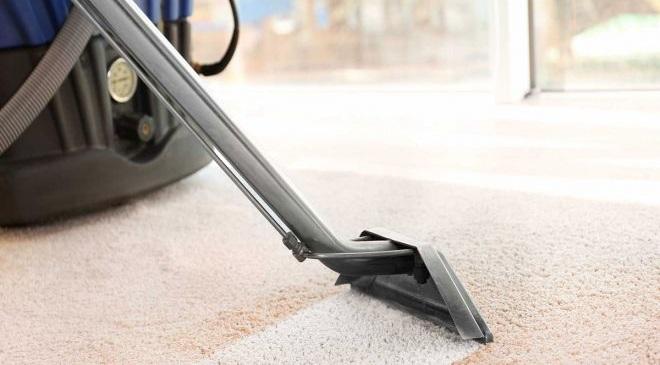
Tufted Carpets
Tufted is the most common carpet type in the UK but there are multiple options within the category which may need there own specific attention.
Below are some general rules regarding tufted carpets:
Dos
- ✔ Vacuum regularly
- ✔ Set the vacuum at the correct height for the carpet height
Don’ts
- ✖ Pull out loose or sticking-out tufts – snip them instead
- ✖ Rub too hard or use too much cleaner – patience is better than overkill!
Carpet Stretching and Repairs
Is your carpet lumpy or seperating at the seams?
If so, the best thing to try would be carpet stretching. This involves using specialist tools which stretch out the carpet and reattached it to the walls, while smoothing out any issues and tightening the carpet up again.
The average cost of carpet stretching is between £70 - £100. However, the overall cost will depend on several factors, such as:
- The size of the room.
- How damaged is the carpet?
- Where you live in the UK.
Alternatives to Carpet
Carpet is, of course, not the only option when it comes to flooring. Here are some of most common flooring alternatives:
Wooden Floor
Wooden floors look great, but they can be expensive. They also require a lot of maintenance and can be easily damaged. Once damaged, a wooden floor is very difficult to fix and almost impossible to get looking the exact same as it once did.
There are several types of wooden floors, and the cost varies depending on the type. For example:
- Engineered wood flooring is sometimes referred to as ‘click and lock’ flooring. This style of wooden flooring is made up of several layers of wood. It can cost as little as £19 per m2 and can be as expensive as over £150 per m2.
- Solid wood flooring is made from one piece of wood, rather than several like the engineered flooring. Each specific type of solid wood flooring will have a different thickness – the thicker the type of wood, the less susceptible it is to damage and dents. Again, price varies vastly between £15 per m2 to £80+ per m2.
- Reclaimed wood flooring is wood flooring that has been reclaimed from older houses and brought ‘back to life’. It’s essentially vintage flooring and usually costs between £25 - £150+ per m2.
Laminate Floor
Laminate flooring is an increasingly popular choice with families, as they’re easy to install, easy to clean and can take a bit of ‘rough and tumble’.
Laminate floor is relatively cheap and can be found for as little as £3 per m2 up to £50 per m2.
Tiles
Tiled floors are both functional and attractive, as well being easy to clean and tiles are also waterproof. There are plenty of styles of tile to choose from, with standard tiles costing around £25 per square metre or less.
Vinyl
Similar to laminate, vinyl is good for a busy home. It’s versatile in looks and in use, and can be found in bathrooms and kitchens just as much as in the living room or bedroom. Vinyl is a fairly cheap option, and you can expect to pay £5 to £12 per square metre on average.
Carpet in the Bathroom
This is a topic people often have strong opinions on – with some people thinking it’s very normal to have carpet in the bathroom and others believing it is unhygienic. Let’s weigh up the pros and cons:
Pros
- ✔ It can look nice! Some people prefer the look of carpet in a bathroom – this is down to personal taste
- ✔ It’s warm on your feet – other types of flooring can be cold to walk on in the winter mornings!
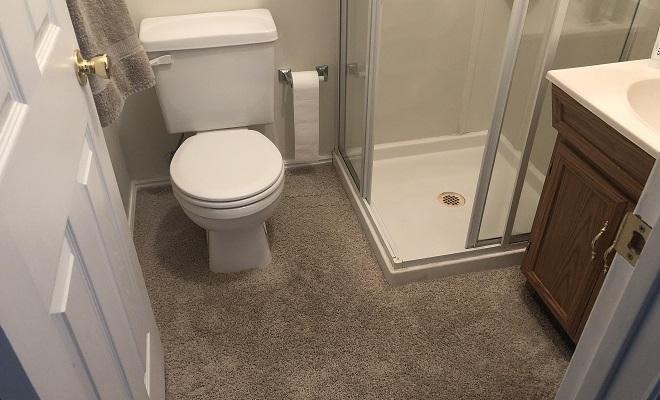
Cons
- ✖ Mildew and mould can grow in time, due to the damp conditions in a bathroom
- ✖ Carpet can become damaged by water over time, leading to costly repairs or more frequent replacement needed
Carpet Removal Cost
The cost of removing a carpet from your home will depend on the carpet removal process.
Professionals (such as carpet fitting companies and carpet retail stores) will charge, on average, between £1 - £4 per square metre. Others will charge per carpet, rather than per square metre, usually between £15 to £20 for the whole carpet.
Should you remove a carpet yourself?
If you choose to remove the carpet yourself, you’ll need to factor in the following costs:
- How much does your local council charge for bringing carpets to the landfill/dump? It will be free of charge in some places, but other councils may charge.
- How are you transporting the carpet? Does it fit inside your car or do you need to hire a van? If you need to hire a van, expect to pay between £20 - £30 per hour. Or you may choose to hire a ‘man with a van’ at an average cost of £40 per hour.
- If the carpet is in good enough condition, check with local charities and community groups if they are in need of a carpet. They may even collect it from your home.
FAQs
Secondly, decide what your price range is. The cost of carpet differs from between £3 - £40 per square metre, depending on whether you want low-budget or luxurious for each room. A rough outline is:
Budget - £5 per square metre
Midrange - £20 per square metre
Luxury - £40 per square metre
Next, measure each space room by room, working out the size of each individual room and then add the costs together.
When getting quotes, remember to check if removing the old carpet is included in the price/job timings. Using the old underlay and grippers can also save time and money but is not recommended.
Having all the wallpaper, paints and carpets picked out and then redone at once is the best way to give your home a fresh new look – and also to make sure everything matches the colour scheme!
How to Find and Hire a Carpet Fitter
Before you decide on a carpet fitter, check out several different quotes to find the right price for you. You should also check out reviews from previous customers to find out if they were satisfied with their work.
Always get 3 quotes and ask the fitter to supply references, while also ensuring they carry the necessary insurance and trade body membership.
Sources
https://www.carpetright.co.uk/underlay/underlay-buying-guide/










